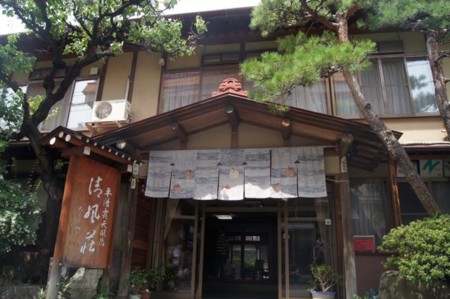Silex is a microframework written in PHP. It's inspired by sinatora. You have only to do is to require silex.phar!
A new official web site of
Silex has been published, so I tried to create a sample application with it.

At this time, I decided to create a simple contact form application with it. there are 2 screens, entry and complete one. when users complete, an email will be sent to the administration.
Phar
[Notice] If your PHP is compiled with "--enable-zend-multibyte", Phar doesn't work. Check your compile option.
Install MameForm
On the official site, you can read the detail documentation about Silex.
Now you can get my sample application code by
my git repository.
$ git clone git://github.com/brtriver/MameForm.git ./MameForm
$ cd ./MameForm
$ git submodule init
$ git submodule update
This sample application use Twig for a template engine and SwiftMailer4 for sending emails, so you have to call submodule init and update.
Structure of MameForm
The structure of MameForm is very simple because of phar archive.
index.php file is a front controller file and which we write logics code in.
"views" directory is to set twig templates, in this application, only 4 templates are set: base.twig (layout), entry.twig, complete.twig and mail.twig(used for mail body).
There are some .htaccess files to deny to access this directory directly.

Call the application
simple call
Then we read index.php.
It is very simple to use Silex. You have only to write below:
require __DIR__.'/silex.phar';
use Silex\Application;
$app = new Application();
....
$app->run();
Entry Page
If you install MameForm in your local environment, you can see below with accessing like "http://localhost/MameForm"

Then let's see the code to be execused in index.php
...
// entry
$app->get('/', function() use ($app) {
return $app['twig']->render('entry.twig', array());
});
Silex helps us to write easily. If the request method is "GET", $app->get method is called and because of our using anonymouse function, this code is very readability.
In this code, there is no logic in it: you have only to return the results which is rendered by Twig.
Validation
Silex has no library or extention to validate, so this time, I wrote the code in index.php below: It's not best way to write validation code in index.php directly, if you always use Silex, You have to prepare your validation library with a Silex extention.
...
// send email
$app->post('/', function() use ($app) {
// validate
$errors = array();
// check empty
foreach (array('name', 'email', 'message') as $k) {
if (trim($app['request']->get($k)) === "") {
$errors[] = sprintf("%s is required.", $k);
}
}
// check email
if (!filter_var($app['request']->get('email'), FILTER_VALIDATE_EMAIL)) {
$errors[] = sprintf("email is not valid.");
}
// send email
if (count($errors) === 0) {
//after sending email, redirect to complete page.
}
return $app['twig']->render('entry.twig', compact('errors'));
});
If the request method is "POST" and access to "/", $app->post("/") method is called. If errors are occured, an error message pushed to the $errors array. It's simple.
Before Filter
I want to use request parameters in templates. in default, we can access to "{{app.requset.request.get('name')}}" but it's not simple, so I made a shorter name for this property like this:
...
// filter
$app->before(function() use($app){
// assign request parameters to "request" for Twig templates with shorter name
$app['twig']->addGlobal('request', $app['request']->request);
});
Thanks to this fileter, I can do access to the request parameters like "{{request.get('name')}}", It's very read readability.
Finally, the template of the entry page is like below:
{% extends "base.twig" %}
{% block title %}Entry Page{% endblock %}
{% block content %}
<h1>Contact Form</h1>
<ul class="error">
{% for error in errors %}
<li>{{error}}</li>
{% endfor %}
</ul>
<div id="entryForm">
<form method="post" action="{{app.request.baseUrl}}/">
<div id="formName">
<label for="Name">Name:</label>
<input type="text" name="name" id="Name" value="{{request.get('name')}}">
</div>
<div id="formEmail">
<label for="Email">Email:</label>
<input type="text" name="email" id="Email" value="{{request.get('email')}}">
</div>
<div id="formMessage">
<label for="Message">Message:</label><br>
<textarea name="message" rows="20" cols="20" id="Message">{{request.get('message')}}</textarea>
</div>
<div>
<input type="submit" name="submit" value="Submit" class="submit-button">
<div>
</form>
</div>
{% endblock %}
Thanks to Twig, the default params are escaped so we don't need to care of XSS.
Send Emails
This sample code is similar to demo code in the official documentation, only in this code, we can use Twig for body content.
...
// send email
if (count($errors) === 0) {
$body = $app['twig']->render('mail.twig'); // set Twig template
$message = \Swift_Message::newInstance()
->setSubject(EMAIL_SUBJECT)
->setFrom(array($app['request']->get('email')))
->setTo(array(EMAIL_ADDRESS_FROM))
->setBody($body);
$transport = \Swift_MailTransport::newInstance();
$mailer = \Swift_Mailer::newInstance($transport);
$mailer->send($message);
return $app->redirect($app['request']->getBaseUrl() .'/complete');
}
After sending a email, Silex force to redirect to the complete page. this redirect function is default method in Silex.
Conclusion
The total line number which I had to write is only 65. I think it is very shorter than if we write plain php codes.
It is not difficult to add a new feature to your Silex application because of the extension and it is easy to upload your Silex application to your server by FTP because of a phar archive.
If you want to watch another code written by Silex, there is
Sismo,which is brought to you by Fabien Potenci. It's very useful to understand Silex.










